The Beauty of Baku
By Rehana Alam | Travel | Published 7 years ago
We went to Baku and came back dazzled.
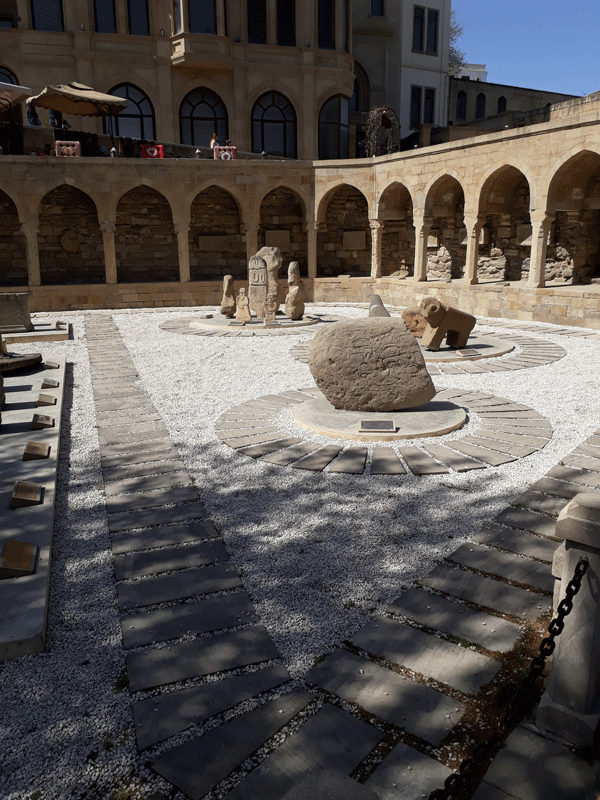
An open-air museum in Icari Sehir.
Some years ago, I read a book called Ali and Nino by Kurban Said and fell in love with Baku, the city in which this story is set. Later, I discovered that Kurban Said was a concocted name and the author or authors were someone else. But nothing mattered. My love affair with Baku had begun. And what’s more, we got a good deal on the airfare to Baku, which made us pack our bags and get the visas online without wasting a minute.
Baku, the capital of Azerbaijan, lies on the Caspian Sea, north of Iran, so the flight is not long. The airport is modern, and looks empty to Karachi eyes. Our very first impression is one of cleanliness and orderliness. We dump our bags in the hotel and take a Metro to Icari Sehir, the old walled town in the heart of the modern city of Baku. Our wonder increases at the cheap fare of the Metro – about 20 rupees for each trip, regardless of the distance
Icari Sehir is a treasure trove for history buffs like us. It is centred round the Qiz Qalasy (or Giz Galasy), also called the Maiden Tower, which is not very tall but still provides a wonderful view of the old city and the surrounding area. Like the Eiffel Tower in Paris, it is the defining monument of Baku. The story goes that a rich old man, father of a renowned beauty, wants to ravish his own daughter; consequently she flings herself to her death from the roof of the tower to save her honour. However, no one knows the reason for the construction of the tower, but it is now a UNESCO World Heritage site.
Most of the buildings in the old town have been renovated, but with great expertise and adherence to the original construction materials and methods. Our next stop is the Shirvanshah Palace, home of the old kings of Baku. It is rather small and nondescript compared to the Ottoman or Mughal palaces. However, everything here is displayed and maintained beautifully. A scale model of the entire Icari Sehir in one of the rooms provides a breathtaking overview of the old town.
The real beauty of the old town, which dates back to the 12th century, lies in its winding narrow streets, all paved and immaculately clean, and the sudden views of beautiful balconies or flowering rose bushes, small mosques which are always open to both men and women and the patina of the old yellow stone which is the main building material. As we roam around in the centuries-old streets, we stumble upon an open-air museum, a Turkish hamam and a lovely caravanserai where goods used to come from Multan! It is like taking a walk down history. We seize the opportunity to have a Turkish bath in a 16th century hamam, which turns out to be much smaller than the ones in Istanbul. It is not crowded at all and the hamam experience, true to tradition, is leisurely and serene.
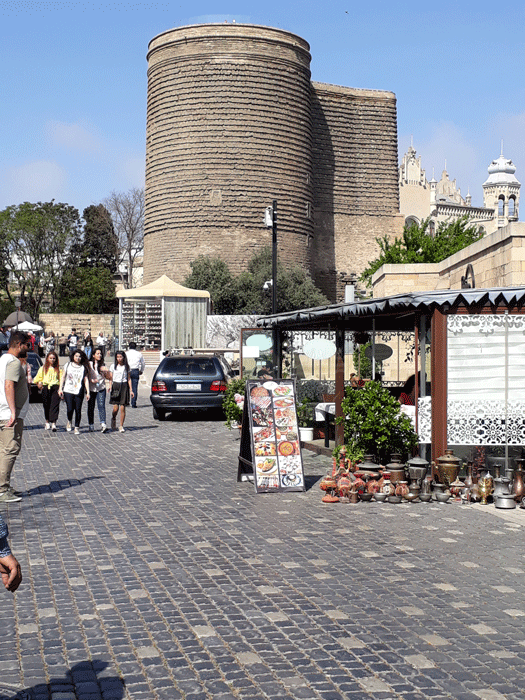
The Maiden Tower
Modern Baku has a different charm. The natural terrain is a desert, but the government has beautified the city with innumerable well-maintained parks that boast tall trees, flowers, beautiful landscaping and tinkling fountains, which make them extremely attractive. There are modern high-rise buildings in the city like the famed Flame Towers and many imposing government edifices. The best evening walk is along the Bolivar (Boulevard), which has the Caspian on one side and the mansions of oil tycoons of old, on the other side.
Oil was, indeed, the raison d’ etre of Baku. Centuries before the world woke up to the use and power of oil, peasants around Baku were collecting black sludge that oozed from the soil and using it as fuel. In the 1600s, a crude oil well, the first of its kind in Baku, was designed by a local Turk. Later, as people grasped the importance of oil, every country wanted to seize Baku. Iran and Turkey, its nearest neighbours, vied for it; as did Russia and Britain. The Germans also jumped into the fray. Finally, at the end of World War I, Azerbaijan was gobbled up by then USSR and there it remained till the breakup of the Union, when it became independent.
Through all these political upheavals, canny men in Baku made money from oil. They became rich beyond their dreams and showed off their wealth by building palaces for themselves and living the most luxurious lives imaginable.
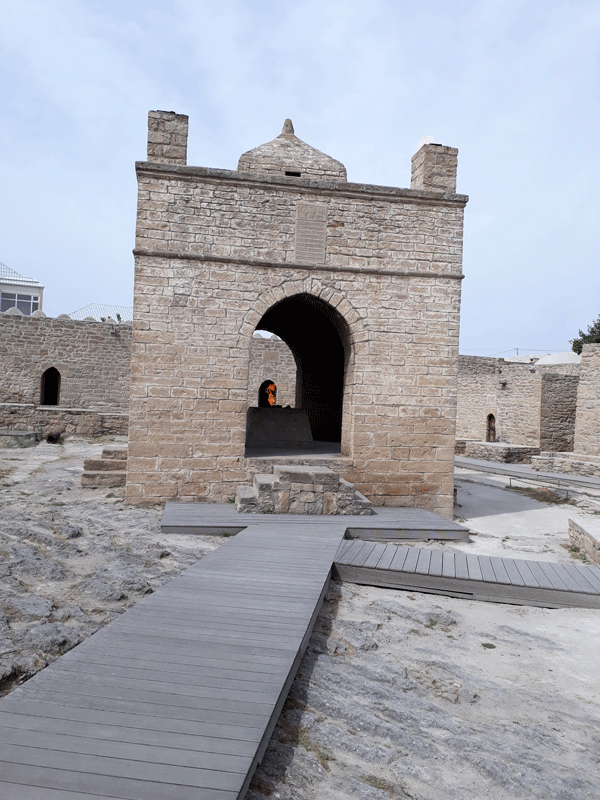
Atesh Gah
We get to see the oil mansions only from the outside. However, the one built by Haji Zeynalabdin Taghiyev has been converted into the National History Museum. The museum, the largest in Azerbaijan, is well-curated and informative. But the mansion is remarkable in itself. Taghiyev seems to be a forerunner of the US President, since even the window panes have his name and arms emblazoned on them. The house is spread over one entire city block and has huge halls, with fluted columns and gilded ceilings, opening one into the other – perfect for housing a museum. The private rooms of the Taghiyev family have been kept intact and the sumptuousness of the furnishings are a study in opulence.
One of the most memorable sights of Baku is Yanar Dag or burning mountain. This is a hillock where natural fires have burned constantly, ever since the time of Ibne Batuta and Marco Polo. Both travellers have alluded to Yanar Dag in their memoirs. It must have seemed magical in the olden days for the fire never goes out, not even when it rains or snows. Of course it is nothing more than natural gas escaping through the fissures in the ground and bursting into flames when it comes in contact with the oxygen in the air. But the fact that it has been burning constantly for centuries is awe-inspiring.
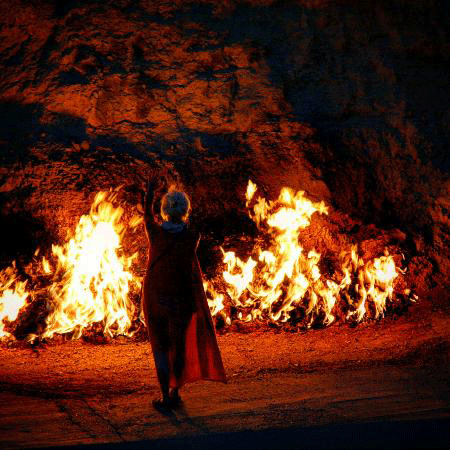
Yanar Dag
Another site that is not to be missed is Atesh Gah – a 15th century temple complex built over natural and perpetual fires. Beginning as a Zoroastrian temple, Atesh Gah later attracted Hindus and Buddhists as well, till the fires died out in the early 1900s. The complex then fell into disrepair but the government has renovated it expertly and lit the temple fires again by piping in gas from the nearest town.
Since both Yanar Dag and Atesh Gah are outside Baku, we got to see the extensive oil fields that surrounded the city. It is a mind-boggling sight. Hundreds of oil rigs go silently up and down the well. Needless to say, because of the oil wealth taxis are very cheap.
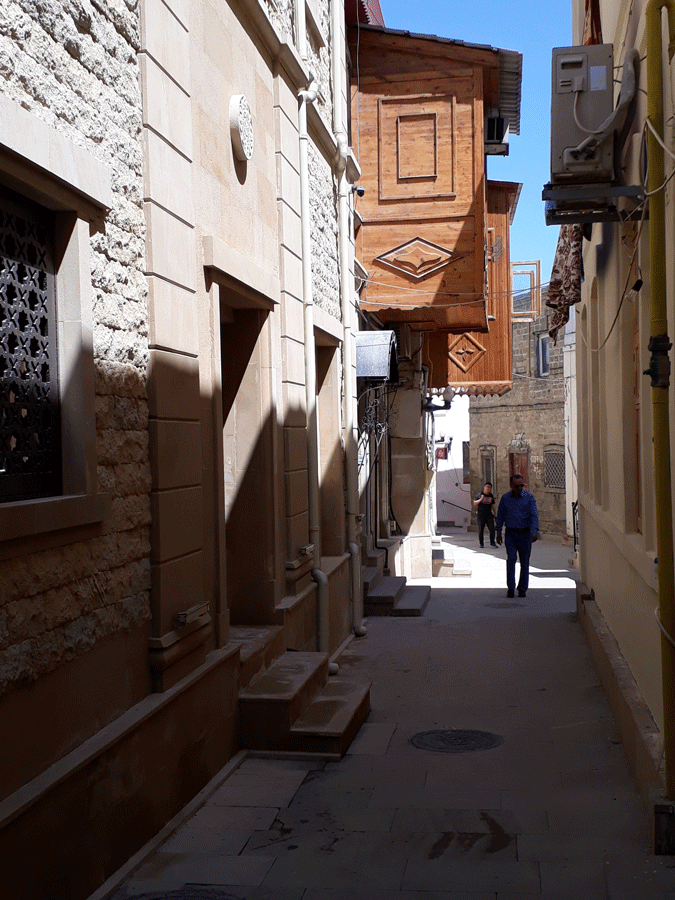
Winding alleys in the old city.
The language spoken in Baku is a very close cousin of Turkish (many words are akin to Urdu), and many people also speak Russian. English is not common but sign language works beautifully, because the people are friendly and good-tempered. Actually Baku is new to tourism. Only when the oil prices dipped a few years back did the government actually turn its attention to the tourist industry.
Pakistanis can find halal food everywhere and never miss a namaz because mosques abound and welcome all. Baku holds a feeling of familiarity for us because the religion, the food (even the names of foods) and many cultural aspects are similar.
A rare bonus of visiting Baku is the beauty of its people. Azerbaijan is close to the Caucasus, the legendary Koh Qaf, and the entire population reflects that proximity. Men and women are equally good-looking. They have big eyes, perfect noses and smooth complexions. Observing them while taking a ride in the Metro, becomes a pleasurable experience in itself.
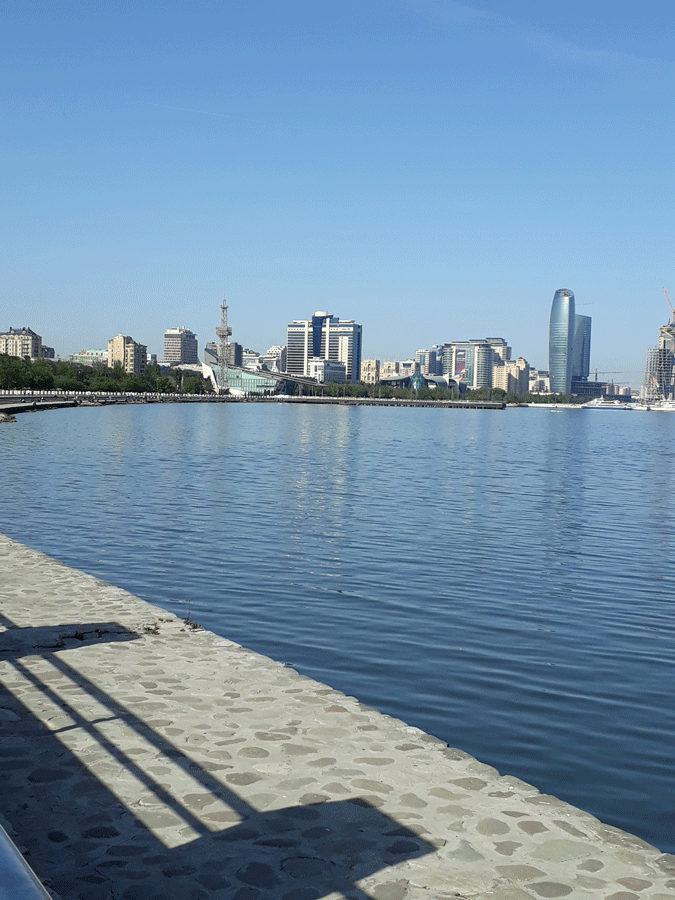
Modern Baku on the shores of the Caspian
The best time to visit Baku is spring or autumn, so that you avoid the extremes of hot and cold weather. And the delicious fruit of the season is also in abundance; we got to eat plenty of strawberries and pears.
Our trip to Baku proved to be far beyond expectations. There is history and modernity, great food and sightseeing, low prices and, above all, online visas – even for the green passport! And all this packaged in a clean environment, with pleasant-mannered people who are easy on the eyes.
Ali and Nino did not love Baku without reason.


